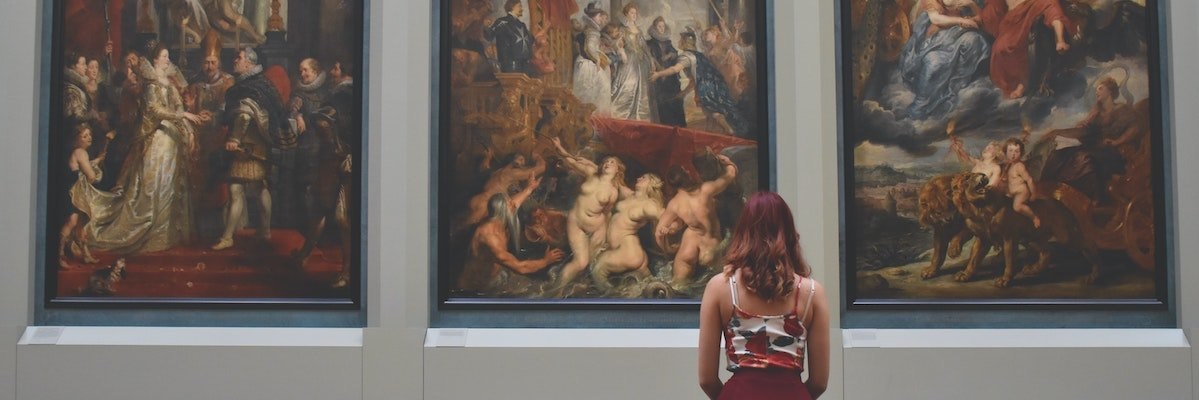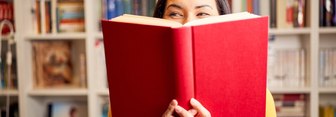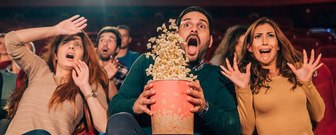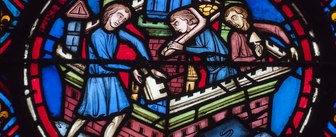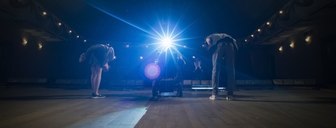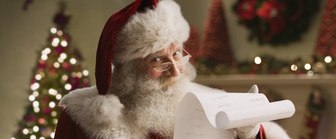From cave paintings to conceptual art pieces such as bananas taped to a wall, people have demonstrated their artistic ability through centuries of creative expression. But which kinds of art styles do Americans prefer, and how many Americans consider themselves skilled in different forms of art? To understand where American opinion stands when it comes to art and artistic skills, a recent YouGov survey asked Americans about various art movements and their own artistic abilities. Younger adults are particularly confident in their own artistic ability and more likely to know and like many different styles of art.
Americans are pretty evenly split on whether they consider themselves to be artistic: 49% say they are somewhat or very artistic, and 48% say they are not very or not at all artistic. Democrats and adults under 45 are more likely than Republicans and older adults to say they are somewhat or very artistic.
While most Americans (59%) say they are not very or not at all familiar with famous art movements and styles, those who consider themselves artistic are more likely than those who do not to be somewhat or very familiar with famous art movements and styles (61% vs. 17%). Democrats and college graduates are more likely than Republicans and people who didn't graduate from college to say they are familiar with famous art movements and styles.
Among Americans who say they are very, somewhat, or not very familiar with famous art styles and movements, there is a clear most-liked genre among eight options given in the poll: 87% say they like or love classic art. By contrast, each of digital art, pop art, surreal art, and abstract art are liked or loved by just 64% to 66% of Americans who say they are very, somewhat, or not very familiar with famous art styles and movements. The most disliked art style of the options polled is abstract art: 24% say they dislike or hate it. Adults under 45 are more likely than older adults to say they love or like abstract, pop, street, surreal, digital, and modern art.
What proportion of Americans claim to possess a talent for drawing and painting?
One-third (33%) of Americans say painting comes naturally to them, and slightly more Americans say the same about drawing (37%). Among Americans who consider themselves artistic, 49% say artistic painting comes naturally to them and 56% say the same about drawing. One in five (19%) Americans who don’t consider themselves artistic also say that drawing comes naturally to them, and the same proportion say so about painting — suggesting that for some Americans, a natural talent for drawing and painting is not necessarily associated with being artistic. Adults under 45 are more likely than older adults to say that both drawing and painting come naturally to them.
Of 10 artistic skills polled about, Americans feel most confident in their photography skills, with 37% saying their skills are somewhat or much better than other people’s. Sewing, drawing, painting, and writing poetry are each skills that roughly one-quarter of Americans say they are better at than other people. Across all of the skills polled, adults under 45 are more likely than older adults to say their skills are better than other people’s. Gender also is linked to Americans’ evaluations of their artistic skills: Men are more likely than women to say their skills in each of photography, filmmaking, and digital art are better than other people’s, while women are more likely than men to say their sewing skills are better than other people’s.
— Linley Sanders and Carl Bialik contributed to this article.
See the results from this YouGov poll
Methodology: This poll was conducted online on March 30 - April 4, 2023 among 1,000 U.S. adult citizens. Respondents were selected from YouGov’s opt-in panel using sample matching. A random sample (stratified by gender, age, race, education, geographic region, and voter registration) was selected from the 2019 American Community Survey. The sample was weighted according to gender, age, race, education, 2020 election turnout and presidential vote, baseline party identification, and current voter registration status. Demographic weighting targets come from the 2019 American Community Survey. Baseline party identification is the respondent’s most recent answer given prior to March 15, 2022, and is weighted to the estimated distribution at that time (33% Democratic, 28% Republican). The margin of error for the overall sample is approximately 3%.
Image: Pexels (Una Laurencic)
